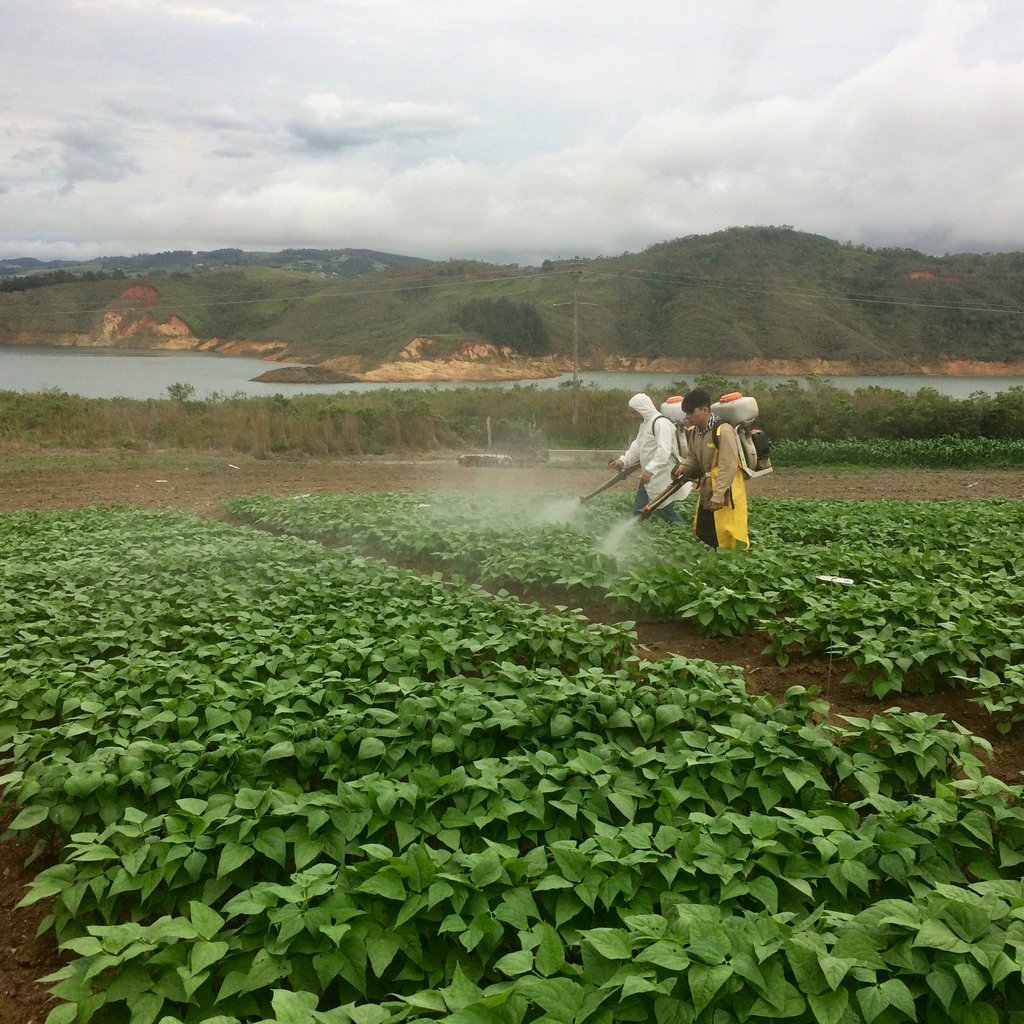Disease resistant common beans
What do we see on the project photo?
While fields are usually sprayed to protect crops from diseases, we did the opposite in this bean field trial in Uganda and inoculated it artificially with pathogen spores to ensure a high and uniform disease pressure. This allowed us to find bean germplasm genetically resistant to the angular leaf spot disease.
How would you explain to a child what the project is doing?
Just like humans get the flu, plants can get sick. We are doctors for plants and investigate how we can make them stronger, so that they stay healthy. This is especially important for beans, which are often grown by poor farmers: sick plants make less beans so the farmer has less food to eat.
What is the project’s main objective?
Angular leaf spot is a devastating fungal bean disease causing yield losses of up to 80% in the tropics and subtropics. The goal of this project is to develop knowledge and tools that help bean breeding programs such as the one from the International Center for Tropical Agriculture (CIAT) to efficiently breed for resistance to the disease.
Why is the project important?
Beans, often called the meat of the poor, are the most important protein source for many people in Latin America and Africa. Plant diseases can cause huge harvest losses and as beans are predominantly grown as a subsistence crop, this often has a direct and negative effect on food security.
What has been the most positive moment during the project?
After difficulties with the import of bean seeds to Uganda, the lack of rain at the beginning of the season and some issues with inoculum preparation, the plants in the field finally germinated and I could observe first disease symptoms. Only then I started to believe that the experiment will succeed.
What have been the biggest challenges encountered in the project?
The biggest challenge was to get all the required papers and certificates to export the seeds from Colombia and import them to Uganda. When we finally succeeded, in order to not miss the rainy season, I had less than a week to pack my things, fly to Uganda and plant the trials.
Which is the most important lesson learnt from the project?
Despite careful planning, things didn’t always go as planned - but by being flexible and creative, we could always overcome the challenges we faced. That was also possible thanks to the brilliant scientists and technicians I had the pleasure to work with!
About the project
Title:
Improving smallholders’ food security through disease resistant common beans
Contacts:
Michelle Nay, Postdoc at ETH Zurich
Bruno Studer, Professor of Molecular Plant Breeding at ETH Zurich
Duration:
2016-2019
Funding institutions:
ETH Global, Sawiris Foundation for Social Development, Molecular Plant Breeding at ETH Zurich
Implementing institutions:
ETH Zurich, Centro Internacional de Agricultura Tropical (CIAT) Colombia and Uganda
Further information:
SFIAR Award 2020
Article in Frontiers in Plant Science
Article in Crop Science
Doctoral Thesis
ETH News article
Blog Post: ETH Ambassadors Blog

